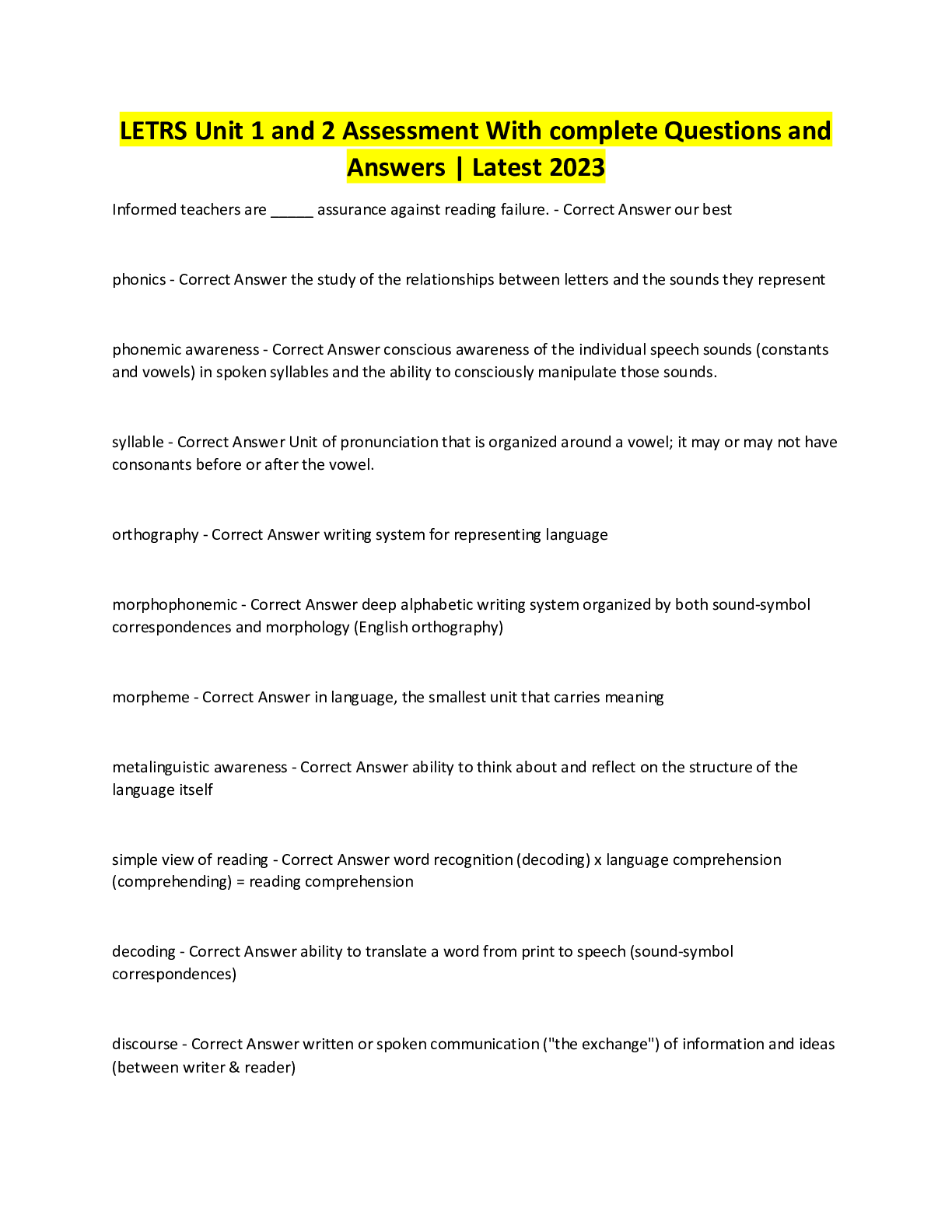NSG 123 Exam 4 - Questions and Answers
Document Content and Description Below
NSG 123 Exam 4 - Questions and Answers Delirium Definition State of temporary acute mental confusion. Usually develops over a 2-3 day person. It is life-threatening & possibly preventable syndrome. ... Most frequent complication of hospitalization in older adults. Priority of safety and treating underlying cause. Delirium, often called acute confusional state, begins with disorientation and, if not recognized and treated, can progress to changes in level of consciousness, irreversible brain damage, and sometimes death Dementia Definition Initial symptoms are related to changes in cognitive function. The cognitive, functional, and behavioral changes that characterize dementia eventually destroy a person's ability to function. The symptoms are usually subtle in onset and often progress slowly until they are obvious and devastating. Family members often report to doctor: Memory loss, Mild disorientation, Trouble with words and/or numbers, Confusion Suspected Elderly Abuse Neglect or abuse of the patient can occur, and this has been documented in home situations as well as in institutions. If neglect or abuse of any kind—including physical, emotional, sexual, neglect, or financial abuse—is suspected, the local adult protective services agency must be notified. The responsibility of the nurse is to report the suspected abuse, not to prove it. What is the point of medications in Alzheimer's? Slow the Progression What two categories of medications are used to treat Alzheimer's? Acetylcholinesterase inhibitor & N-methyl-D-aspartate receptor antagonist N-methyl-D-aspartate receptor antagonist: Name? What Disease? What to watch for? What does it do? Alzheimer's Memantine- Namenda Decreases glutamate circulation in the brain • Watch renal disease Acetylcholinesterase Inhibitor: Name? What Disease? What to watch for? What does it do? Alzheimer's Increases uptake of acetylcholine (Donepezil- Aricept, Rivastigmine- Exelon) • Watch liver disease Cardinal Signs of Parkinson's Symptoms: Tremor, Rigidity, Bradykinesoa (overall slowing of active movement), Postural Instability (postural and gait problems), Gradual onset, symptoms progress slowly over a chronic, prolonged course Diagnosis of Parkinson’s: Although laboratory tests and imaging studies are not helpful to the clinician in diagnosing PD ongoing research with PET and single-photon emission computed tomography scanning has been helpful in understanding the disease and advancing treatment. Currently, the disease is diagnosed clinically from the patient's history and the presence of two of the four cardinal manifestations: tremor, rigidity, bradykinesia, and postural changes. CT scan can show some chronic changes but will not change long term outcomes. The medical history, presenting symptoms, neurologic examination, and response to pharmacologic management are carefully evaluated when making the diagnosis. Confirmation Diagnosis of Parkinson's Give patient Levodopa-Carbodopa and see if they respond to it or not. What does Levodopa do? & What disease is it used in? Increases dopamine available in the brain Parkinson's What does adding Carbidopa to Levodopa do? What disease is it used in? Adding Carbidopa can slow how quickly Levodopa is absorbed Parkinson's What is the brand name of Carbidopa/Levodopa? Simemet Why would a provider add Entacapone (Comtan) to a Sinemet medication regimen? Works well in combo with Simemet What does Amatnadine (Symmetrel) do? increases dopamine release in the nigrostriatal pathway 2 Things to Remember in Parkinson's: Close monitoring of swallowing safety and intake Measure weights weekly Best plan of care for Parkinson's? Medication Management What is the desired effect of medication in Parkinson's? Decrease of tremors, rigidity, and symptoms Cranial Arteritis Definition Cranial arteritis is a cause of headache in the older population, reaching its greatest incidence in those older than 70 years of age. Inflammation of the cranial arteries is characterized by a severe headache localized in the reon of the temporal arteries. The inflammation may be generalized (in which case cranial arteritis is part of a vascular disease) or focal (in which case only the cranial arteries are involved). Symptoms of Cranial Arteritis Cranial arteritis often begins with general manifestations, such as fatigue, malaise, weight loss, and fever. Clinical manifestations associated with inflammation (heat, redness, swelling, tenderness, or pain over the involved artery) usually are present. Sometimes a tender, swollen, or nodular temporal artery is visible. Treatment of Cranial Arteritis The medical management of cranial arteritis consists of early administration of a corticosteroid to prevent the possibility of loss of vision due to vascular occlusion or rupture of the involved artery. The patient is instructed not to stop the medication abruptly because this can lead to relapse. Analgesic agents are prescribed for comfort. Premonitory Stage of Migraine First Stage Symptoms may include depression, irritability, feeling cold, food cravings, anorexia, change in activity level, increased urination, diarrhea, or constipation. Patients may experience the same prodrome with each migraine headache Aura Stage of Migraine Second Stage An aura is characterized by focal neurologic symptoms. Visual disturbances (i.e., light flashes and bright spots) are most common and may be hemianopic (affecting only half of the visual field). Other symptoms that may follow include numbness and tingling of the lips, face, or hands; mild confusion; slight weakness of an extremity; drowsiness; and dizziness. Headache Phase of Migraine Third Phase Migraine headache is severe and incapacitating and is often associated with photophobia (light sensitivity), phonophobia (sound sensitivity), or allodynia (abnormal perception of innocuous stimuli) Postdrome Stage of Migraine Fourth Phase In the postdrome phase, the pain gradually subsides, but patients may experience tiredness, weakness, cognitive difficulties, and mood changes for hours to days. Muscle contraction in the neck and scalp is common, with associated muscle ache and localized tenderness. Physical exertion may exacerbate the headache pain. During this postheadache phase, patients may sleep for extended periods. [Show More]
Last updated: 2 months ago
Preview 1 out of 16 pages
Instant download

Instant download
Reviews( 0 )
Document information
Connected school, study & course
About the document
Uploaded On
Mar 13, 2024
Number of pages
16
Written in
Additional information
This document has been written for:
Uploaded
Mar 13, 2024
Downloads
0
Views
14

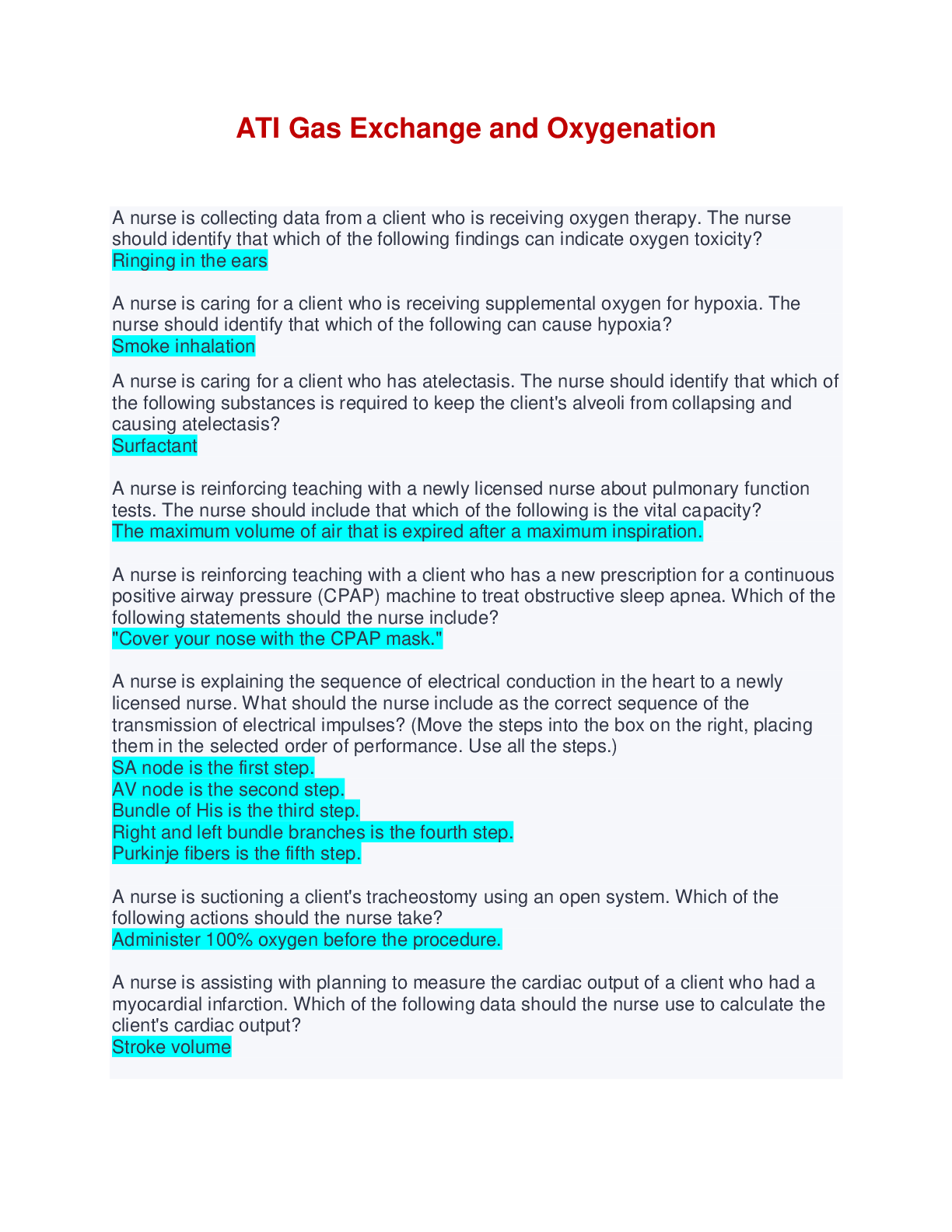






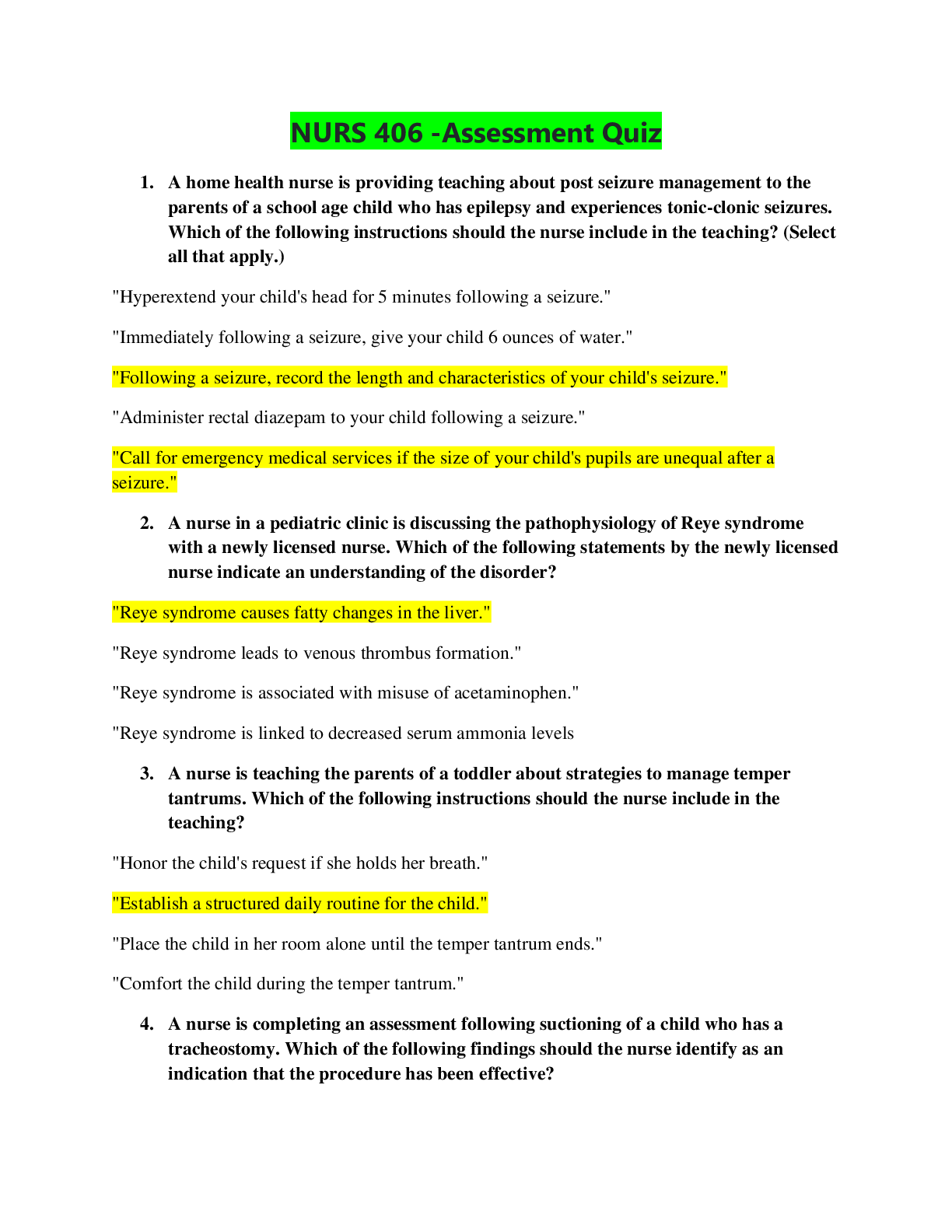



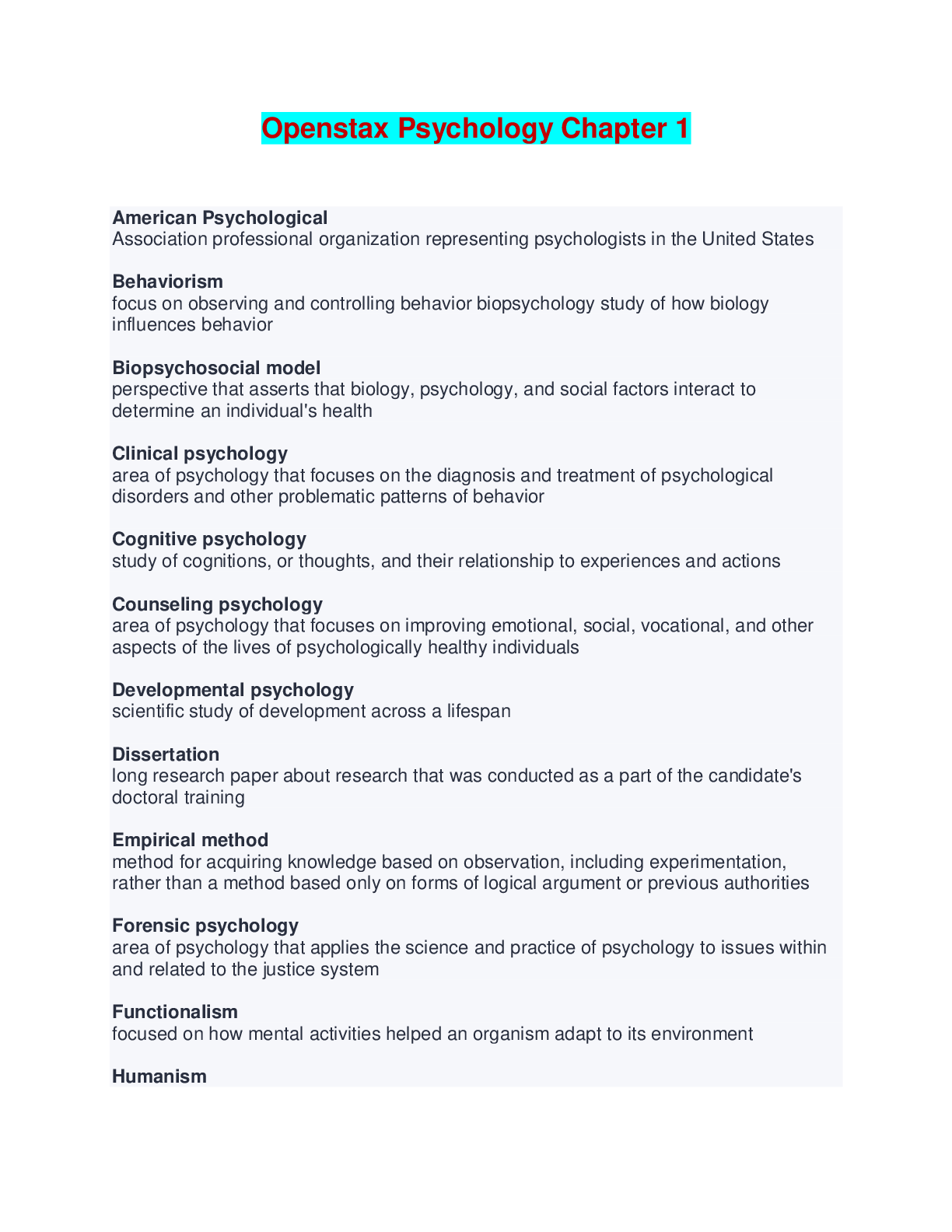
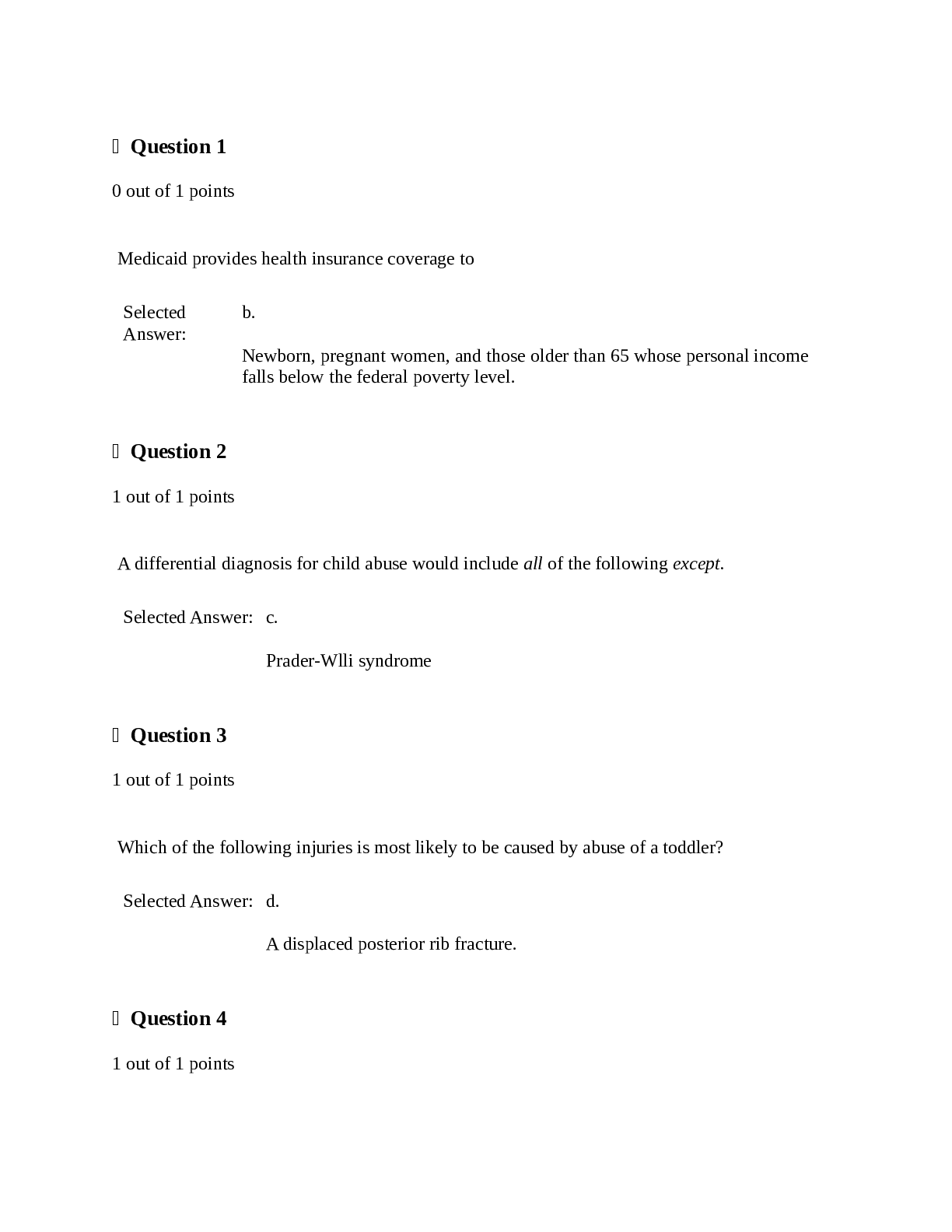
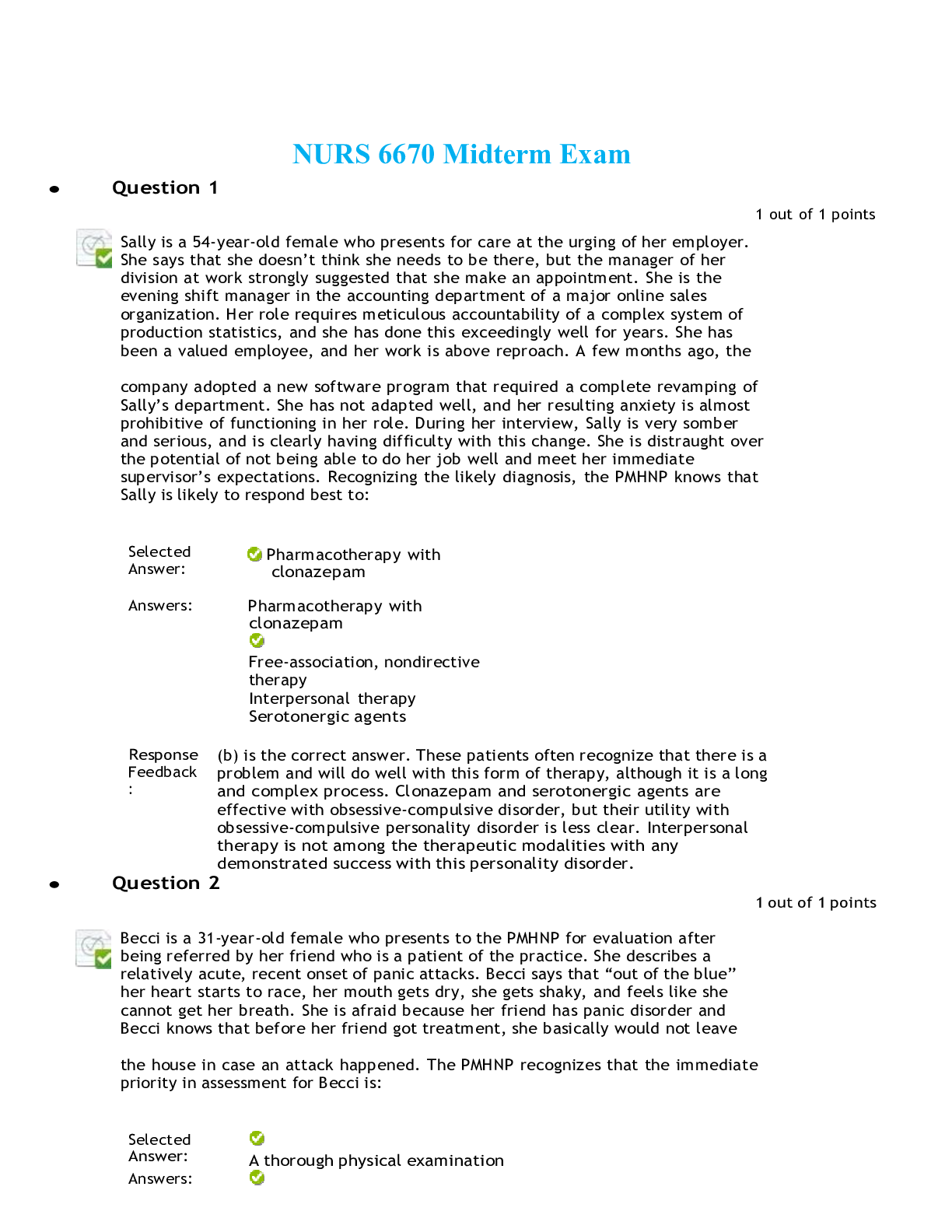
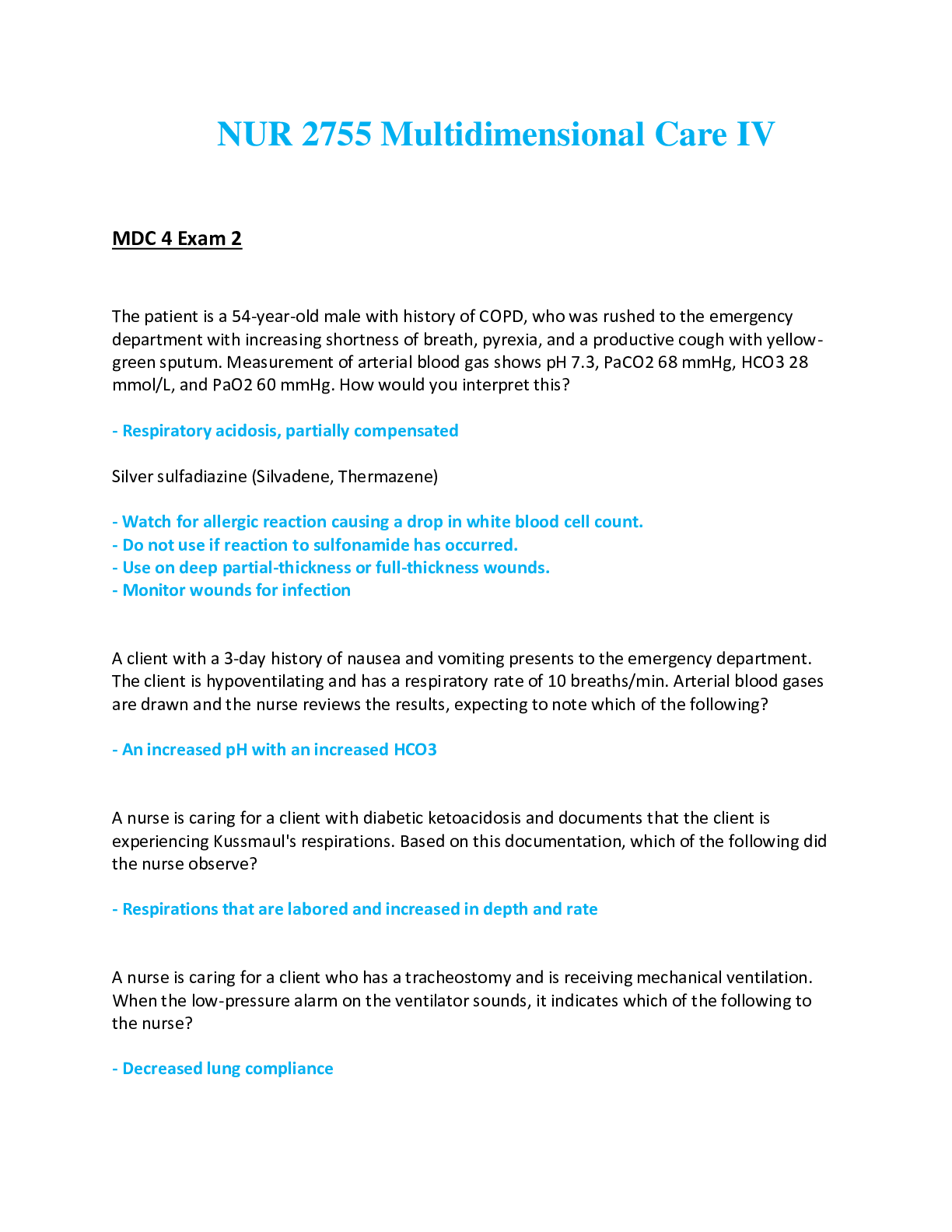


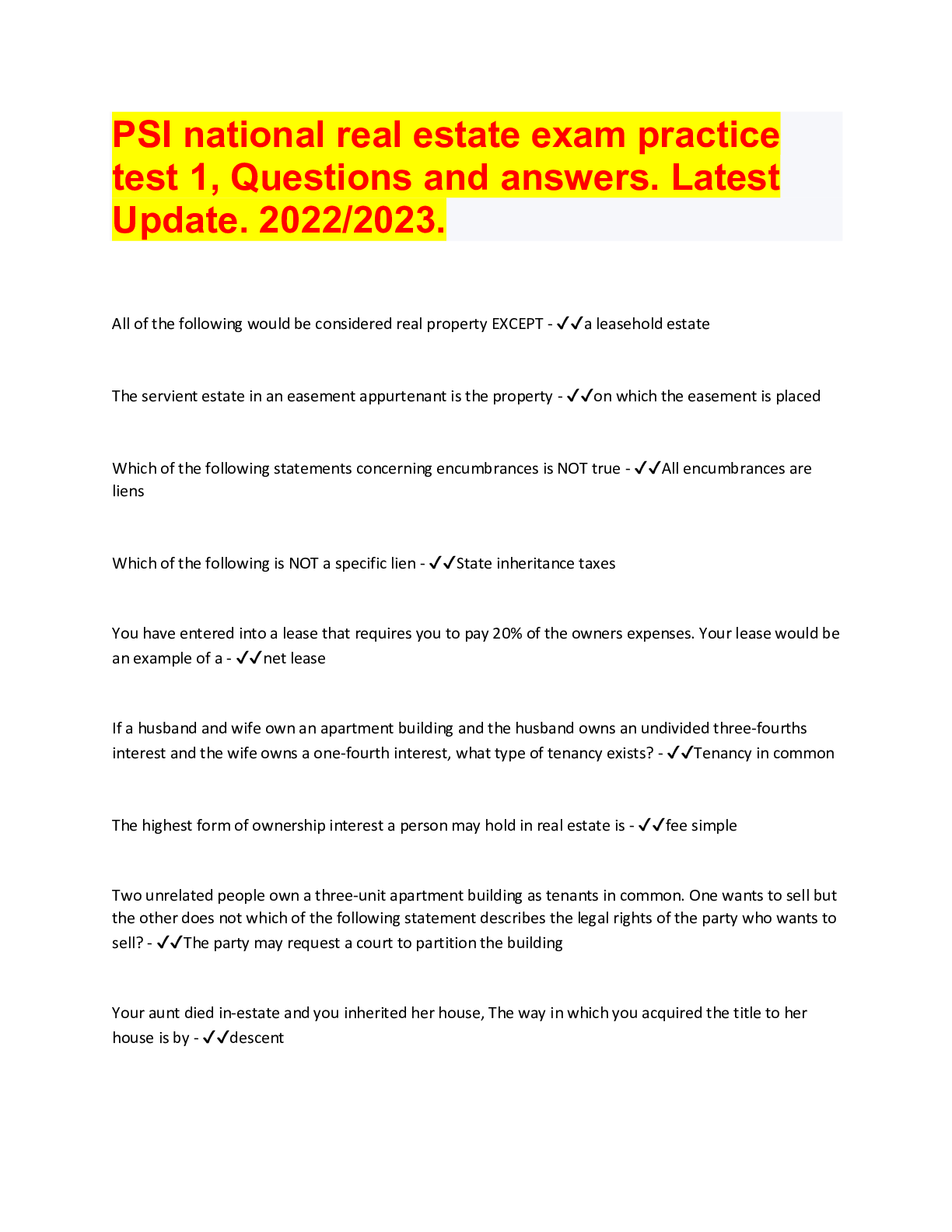



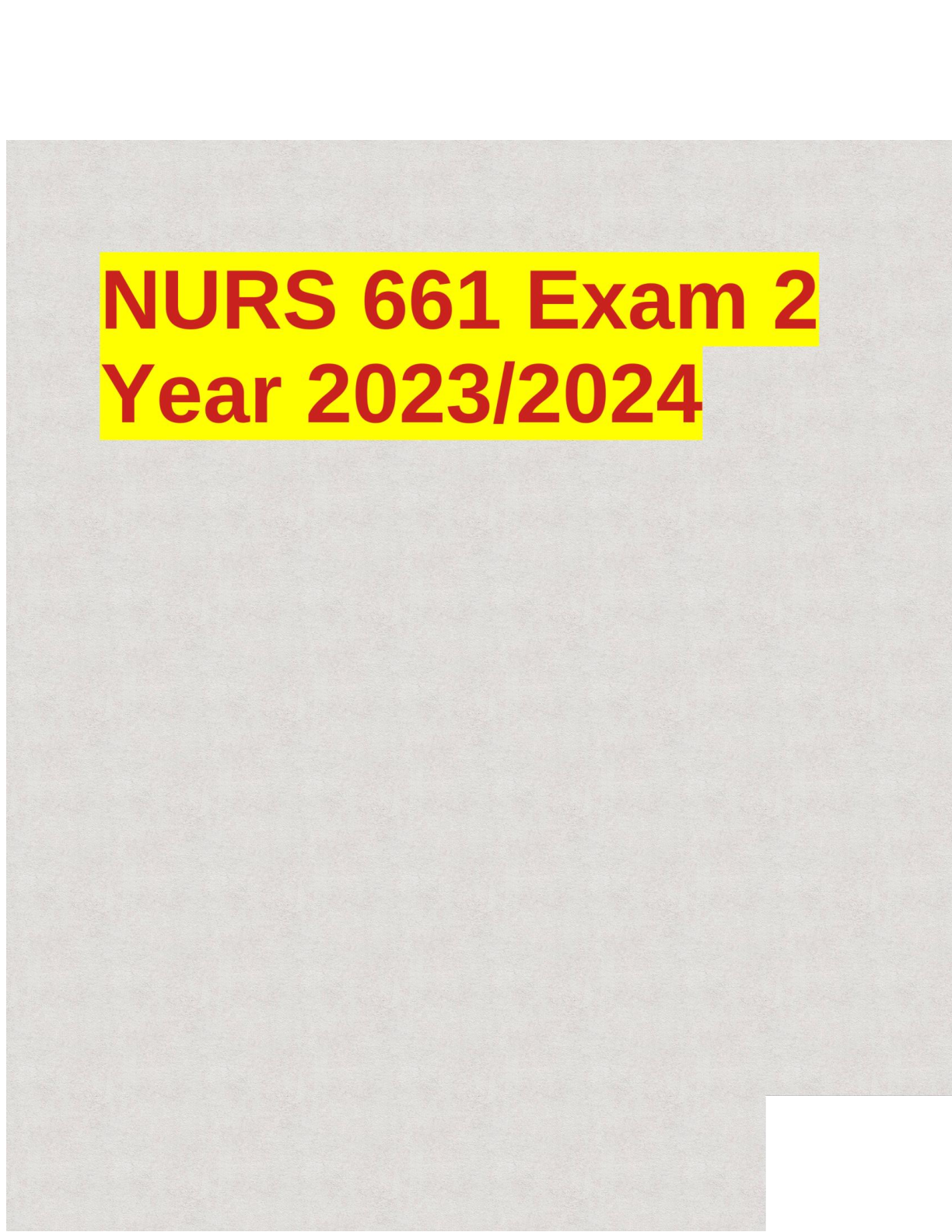



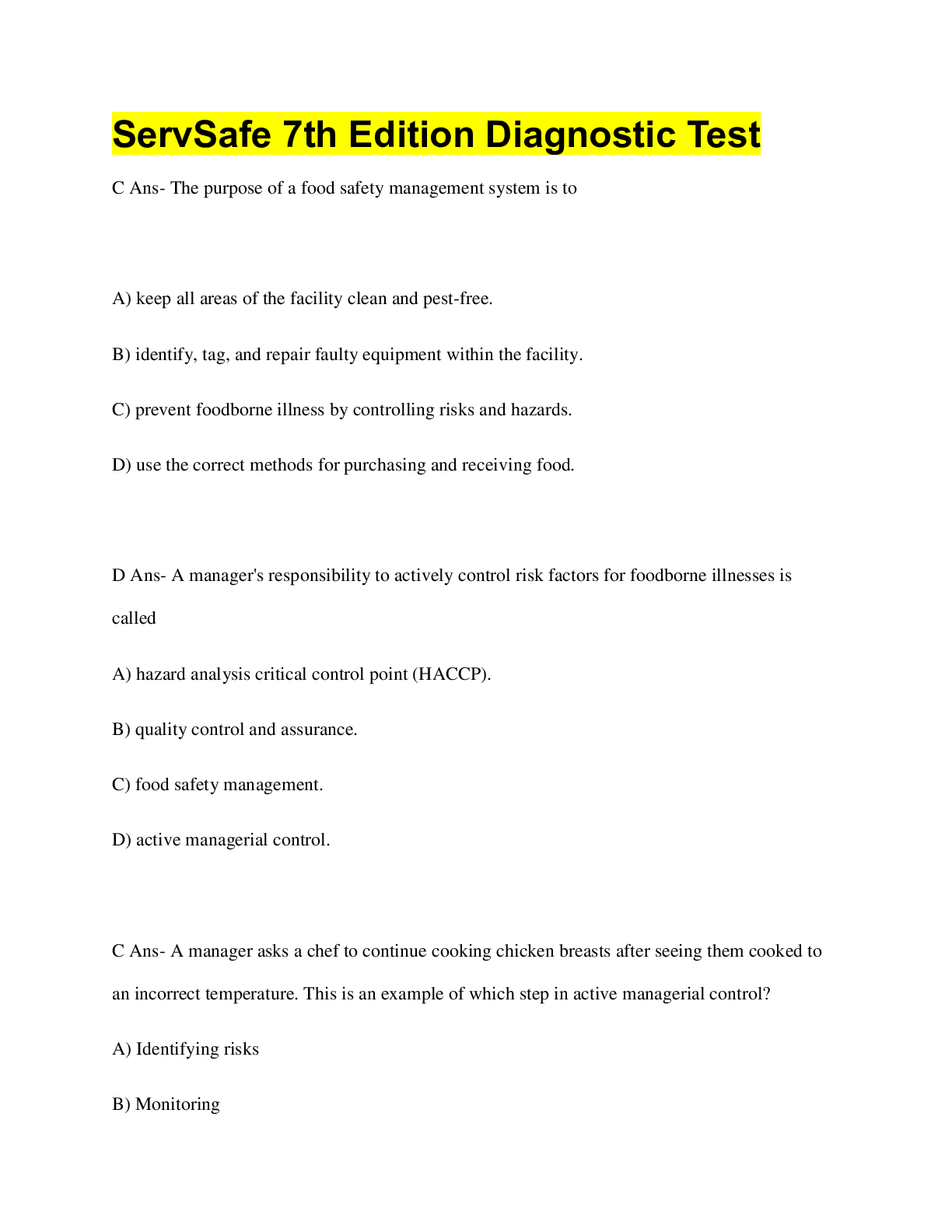
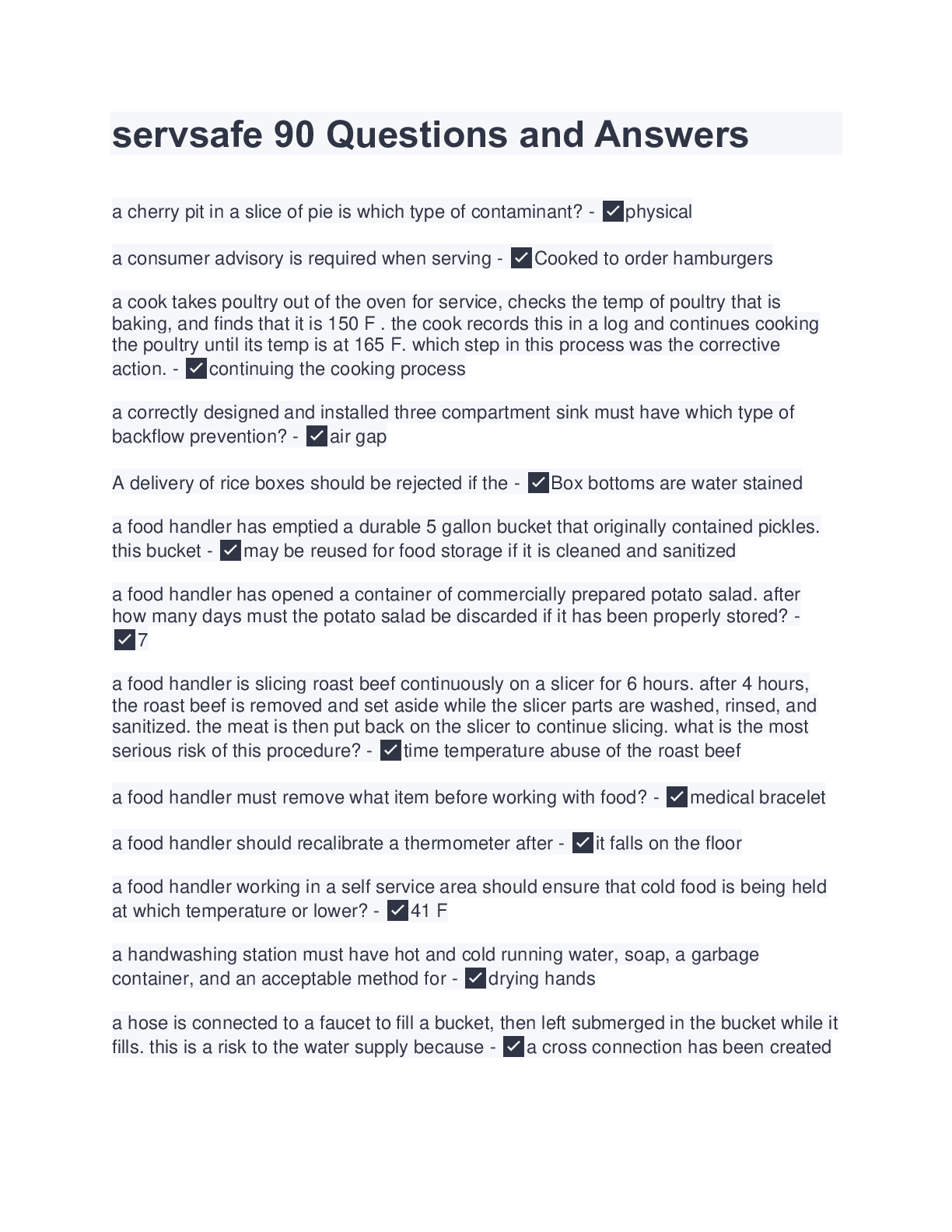
.png)







